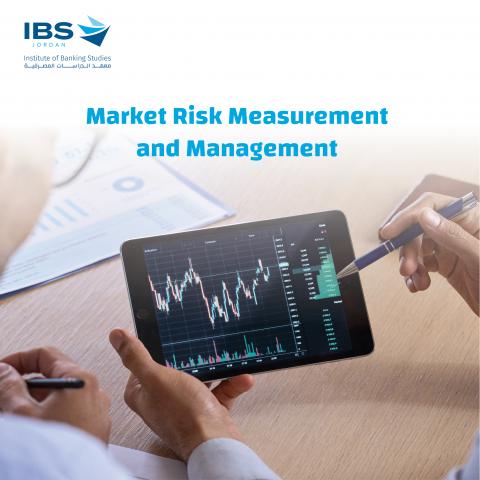
By the end of this training course, trainees will be able to :
- Identify the component of market risk and their measurement approaches.
- Calculate specific measures of interest rate risk, FX risk, equity and commodity risks.
- Compare market risk management for a trading book versus banking book structures.
- Compare and contrast different risk measurement techniques (e.g., gross/net exposure, concentration measure, value at risk (VaR), expected shortfall, etc.).
- Compare the different VaR methodologies (parametric, historical simulation and Monte Carlo simulation) and understand the advantages and disadvantages of each methodology.
- Calculate a simple VaR to a single position (Parametric and Historical Simulation) and expected shortfall measures.
- Gain an understanding of market risk stress testing and its importance.
- Define stress testing techniques for trading exposures (e.g., FX, interest rate, equity commodity).
- Demonstrate a sound understanding of Asset Liability Management (ALM) in terms of the scope and its importance to banks.
- Identify the main ALM tools including IRR mismatch management and performance management, funds transfer pricing, and liquidity management.
- Describe the elements of market risk governance and risk management process.
- Identify the components of market risk policy, limit setting and risk appetite frameworks.
- Professionals working in:
- Treasury.
- Risk .
- Capital Management.
- Regulatory Compliance.
- Audit.
This area focuses on market risk measurement and management techniques to acquire a comprehensive and practical understanding of Market Risk. The broad knowledge points covered in Market Risk Measurement and Management include the following:
- Drivers of Market Risk: Interest Rate Risk, Foreign Exchange Risk, Equity Risk, Commodities risk.
- Value at Risk and other risk measures.
- Stress Testing Methodology.
- Asset and Liability Management.
- Market Risk Management and Governance.
- Fundamentals of Market Risk :
- Market Risk Definition and Drivers.
- Interest Rate Risk:
- IRR components.
- Risk measurement tools: Modified Duration and BPV.
- Foreign Currency Risk: Definition and risk measurement tools.
- Equity Risk: Definition and risk measurement tools.
- Commodities Risk: Definition and risk measurement tools.
- Derivatives Risk: Definition and risk measurement tools: the Greeks (e.g. Delta, Gamma, Vega).
- Trading Book versus Banking Book.
- Practical exercise: Calculation of factor sensitivities for bonds, FX, equities and options.
- Case Study: Lessons from the 2007/2009 Global Financial Crisis .
- Market Risk Measurement:
- Introduction to measurement tools: notional amounts and sensitivities (Duration, convexity, volatility, etc.) .
- Introduction to Value at Risk .
- Value at Risk types:
- Parametric: Delta-Normal Approach.
- Non-Parametric: Historical and Monte Carlo Approach.
- VAR Mapping.
- VAR Back-testing.
- Expected Shortfall and other coherent risk measures .
- Extreme Value Theory .
- Practical exercise: Parametric and Historical VAR and Expected Shortfall.
- Market Risk Stress Testing:
- Introduction .
- Approaches to stress testing:
- Historical .
- Hypothetical: sensitivity analysis and multifactor approach.
- Reverse Stress Testing.
- Uses of Stress Testing.
- Stress Testing challenges .
- Practical exercise .
- Introduction to Asset Liability Management:
- ALM for Banks:
- The basic Balance Sheet components and income statement of a bank.
- Key Ratios.
- Roles of ALM:
- The scope of ALM function with reference to the relationship with Treasury and other key aspects.
- Key ALM activities including IRR mismatch management and performance management, Funds Transfer Pricing, and Liquidity Management.
- Practical exercise .
- Market Risk Governance and Management :
- Structure of Market Risk Governance in banks: the three lines of defense approach.
- Market Risk Management Process
- Identification,
- Measurement,
- Management,
- Monitoring and Reporting.
- Treasury Organizational structure:
- Front Office,
- Middle Office,
- Back Office.
